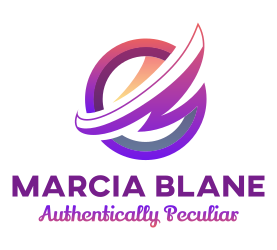Behavior Carries Our Story | Understanding Survival Strategies Through a Trauma-Informed, Culturally-Rooted Lens
Why do we act the way we do?
That’s the question most folks ask when they find themselves repeating patterns they don’t like, but can’t seem to stop. The truth is, behavior doesn’t just show up out of nowhere. It’s shaped by memory, environment, and experience. It’s coded into us through our efforts to stay safe, seen, and sane.
This post is an invitation to look at behavior; yours, your clients’, your community’s. Not as something to fix, but something to understand. Let’s reframe “maladaptive” as “adaptive under pressure.” Let’s honor behavior for what it really is: a map of survival.
1. Behavior Is a Survival Strategy, Not a Flaw
From the moment we enter the world, we begin reading the room.
Children quickly learn what keeps them safe, loved, or out of harm’s way. If home is unpredictable, they may become hypervigilant. If emotions are punished, they may shut down. In clinical language, this might look like anxiety, avoidance, or people-pleasing. But through the lens of survival? These are strategies. Smart ones.
The same holds true in adulthood. Many of us are carrying behaviors we learned in childhood, behaviors that kept us safe back then, but now limit our growth.
Grounding Insight: Behavior that helped you survive doesn’t have to be condemned. It can be honored and, when you’re ready, gently transformed.
Dr. Thema Bryant reminds us:
"Your coping mechanisms were developed for survival. Don't rush to abandon them before you’ve built safety."
2. Collective Survival: When Communities Adapt Together
Entire communities carry survival strategies.
Mistrust of systems. Code-switching in white-dominant spaces. Collective caregiving when institutions fall short. These aren’t cultural quirks, they’re responses to historical trauma: colonization, displacement, systemic racism, intergenerational poverty.
Western psychology often overlooks this, labeling communal behaviors as dysfunctional or resistant. But viewed through a decolonized lens, we see wisdom, resilience, and ancestral memory at work.
Takeaway: Healing must be culturally responsive. We can’t separate behavior from history, or from the community that shaped it.
Stat Insight: A study in The American Psychologist emphasized that culturally adapted mental health treatments are significantly more effective for BIPOC communities.
3. Survival in Oppressive Systems
Survival doesn’t always look strong. Sometimes it looks quiet. Or angry. Or checked-out.
When a student skips class, they might be navigating food insecurity.
When a therapy client resists vulnerability, they might have learned that openness led to betrayal.
When someone numbs through addiction, they may be easing the ache of untreated trauma.
These aren’t personal failings, they’re evidence of the human spirit adapting under pressure.
Clinical Note: Before labeling a behavior “non-compliant” or “resistant,” pause and ask: What has this person survived that makes this response make sense?
As Resmaa Menakem says:
"The body is where trauma resides, but also where resilience lives."
4. When It’s Safe to Soften: Shifting from Surviving to Healing
Healing doesn’t demand that we reject our survival skills. It asks us to outgrow them, with compassion.
That moment when you no longer have to scan the room for danger? That’s healing.
When you speak without shrinking? That’s healing.
When you rest, not as a reward but as a right? That’s healing, too.
But this shift takes time. It takes safety. It takes witness. And it often starts with community.
Tip for Practitioners: Focus less on “changing behavior” and more on creating emotionally safe environments. When people feel safe, they will try something new.
5. Communal Healing Is the Future
Healing isn’t a solo act. Especially in marginalized communities, healing is relational.
It lives in cultural rituals. In shared meals. In spiritual practice. In movement, art, laughter, and storytelling. It happens in therapy, but it also happens at the cookout, the altar, the protest, the prayer circle.
We heal when we are seen. We heal when we belong. We heal when we don’t have to explain ourselves to be understood.
For clinicians, this means loosening the grip on traditional models that pathologize and instead embracing ones that are liberating, decolonized, and deeply human.
As Tricia Hersey of The Nap Ministry puts it:
"Rest is resistance. It is a portal for healing."
Closing Words: Behavior Is a Message, Not a Mistake
So the next time you, someone else, falls into an old pattern, take a breath. Instead of asking, What’s wrong with me?, try asking, What have I been through?
Behavior tells a story. Not one of dysfunction, but of adaptation. Of making it. Of surviving what wasn’t survivable.
And if you’re here now reading this, breathing through it, then something inside you is already reaching for more.
Survival got you here. Healing will take you further.
Written by Marcia Blane, LPC, NCC, C.Ht.
Licensed Mental Health Counselor | Trauma-Informed Life Coach | Clinical Hypnotherapist
www.marciablane.com

